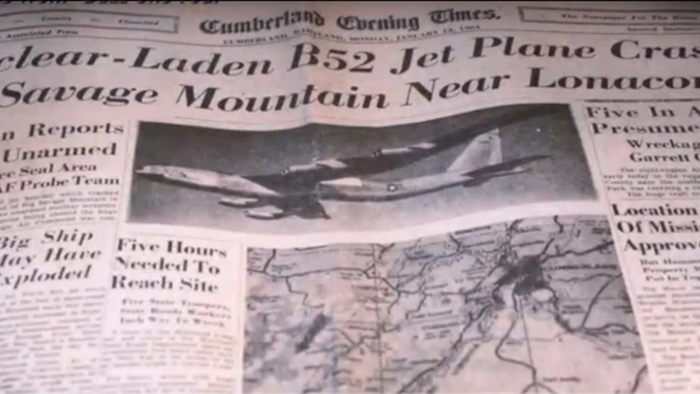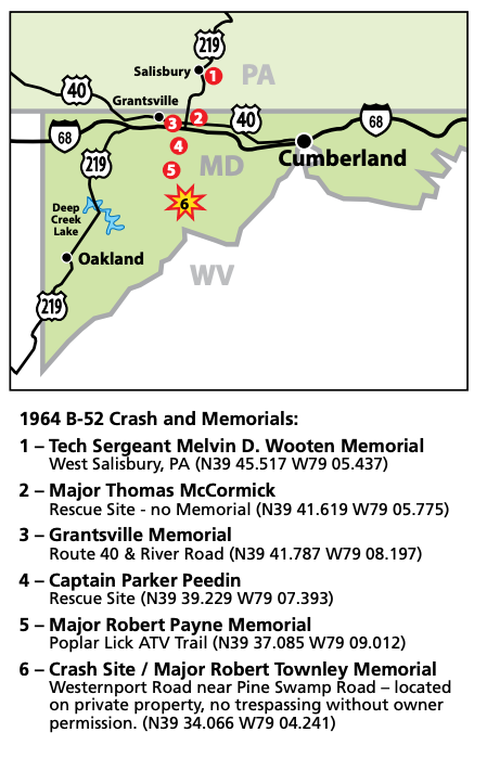


Six decades ago, in a near-nuclear disaster erased from public memory, a U.S. Air Force B-52D Stratofortress—carrying two thermonuclear bombs—was torn apart six miles above the Appalachian Mountains. The aircraft's vertical stabilizer snapped off mid-flight, sending the bomber into an uncontrollable dive before it slammed into Big Savage Mountain in Western Maryland. The crash marked one of the closest nuclear near-misses on U.S. soil during the Cold War.
On January 13, 1964, a B-52D Stratofortress took off from Westover Air Force Base in Massachusetts en route to Turner Air Force Base in Georgia as part of a Strategic Air Command mission called "Operation Chrome Dome." On board were five crew members and two thermonuclear bombs.
A heavily redacted USAF report on the mid-air accident of the nuclear-laden B-52D specified that a bulkhead structural failure occurred during severe turbulence that caused the vertical fin to separate.
As the bomber broke up in mid-air, the pilot, Major Thomas McCormick, and co-pilot Captain Parker Peedin ejected and survived. However, three other crew members perished:
The crash drew national attention and mobilized hundreds of local volunteers for search and rescue efforts despite dangerous blizzard conditions across the Big Savage Mountain.
In 2014, Politico interviewed Gerald Beachy of the Grantsville Community Museum, which amassed a collection of crash memorabilia and wreckage from the bomber, who said it took USAF salvage operations several days to recover the thermonuclear bombs from the remote crash site.
The incident in the remote mountains of Western Maryland has been largely erased from public memory. It occurred at the height of the Cold War—just two years after the Cuban Missile Crisis. This wasn't merely an air crash; it stands as one of the most serious nuclear weapons-related accidents on U.S. soil, even though the warheads were unarmed.
Reminders of the past are crucial as the nation braces for the 2030s—a decade in which the world is expected to fracture into a dangerous bipolar state, accelerating at an unprecedented pace.
Meanwhile, Europe is unleashing massive efforts to rebuild weapons stockpiles and scale up war readiness amid the ongoing war in Eastern Europe. Meanwhile, in the U.S., the Trump administration is accelerating plans to expand defense capabilities and bolster hemispheric defense. The arms and technology race with China is no longer in snail mode—it's in full-blown hyperdrive, and with that comes many risks.

